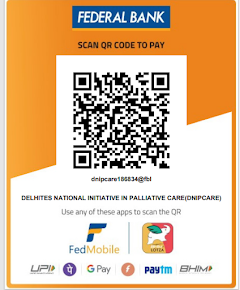For cancer patients with symptomatic
illnesses, palliative therapies can be just as important as potentially
curative treatments. Although palliative therapies are not used to
shrink the tumors, they do help patients control or even eliminate their
symptoms and maintain their quality of life throughout treatment.
Palliative care can incorporate a number of unique
techniques. These include:
- · Traditional treatments such as radiation therapy or minor surgery
- · Palliative-only options such as respiratory therapy or pain medications
- · Alternative therapies such as acupuncture, yoga or massage therapy.
Patients can benefit from these therapies at
any point during their treatment. Often, doctors begin prescribing these therapies
immediately after diagnosis and continue using them throughout the patient’s
entire course of treatment.
When doctors prescribe patients palliative
therapies, it does not mean that the patient has no chance of achieving
remission. In fact, palliative therapies
are often used alongside potentially curative therapies. However, when the risks of traditional
treatment outweigh the prospective benefits, patients may opt out of the more
aggressive curative treatments and rely solely on palliative care.
Some palliative therapies – such as
radiotherapy and surgery – can cause patients to experience significant side
effects. However, most palliative
treatments have low risks for complications.
Patients can obtain palliative care through
several venues. Hospitals and cancer
centers often provide these treatments on-site, while in-home caregivers and
hospice services can provide these treatments in the patient’s own house.
What
Palliative Therapies can Do for Cancer Patients
Overall, Palliative therapies are intended to improve a patient’s quality of life after a cancer diagnosis.
Palliative care can address several different
cancer-related complications. These
conditions can be mental, such as stress or mild depression, or they can be
physical, like pain or difficulty breathing. Palliative therapies can address cachexia,
weight loss and fatigue; they can also help manage nausea, diarrhea and other
side effects of therapy.
Author bio: Faith Franz researches and writes
about health-related issues for The Mesothelioma Center. One of her
focuses is living with cancer.
From
Danielle DiPietro
(407) 434-0732 ext. 24
Public Outreach
The Mesothelioma Center at Asbestos.com
http:\\www.asbestos.com



Thanks for the guiding principles of Palliative Care quoted above. It is also important to disseminate existing cost-effective techniques in Palliative Care including drug administration etc to desist the people from moving around for a curative option if the disease is beyond the stage of control. It also helps largely to reduce the economic burden and thereby save from indebting most of the poor families. I thank Mr Hamza to put this article here.
ReplyDeleteIt's amazing blog about weight loss. I will follow this blog.
ReplyDeleteWeight Loss Center in Delhi
Aerobics Center in Delhi